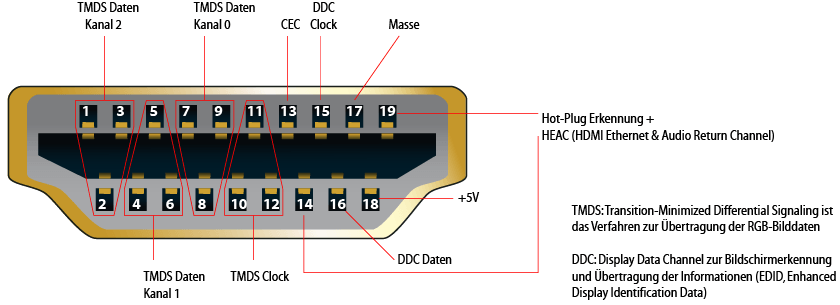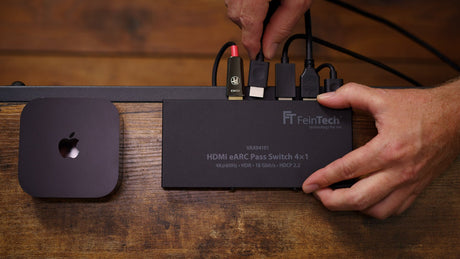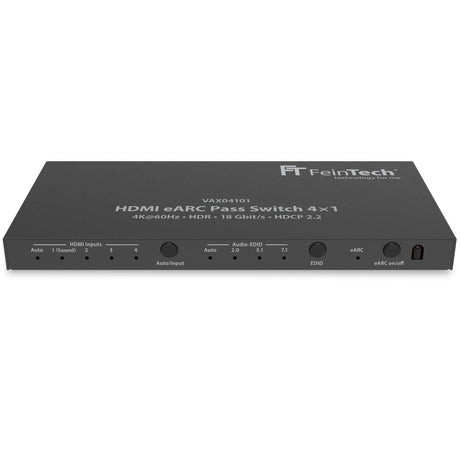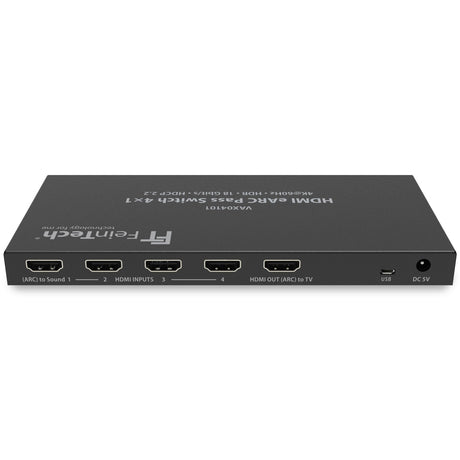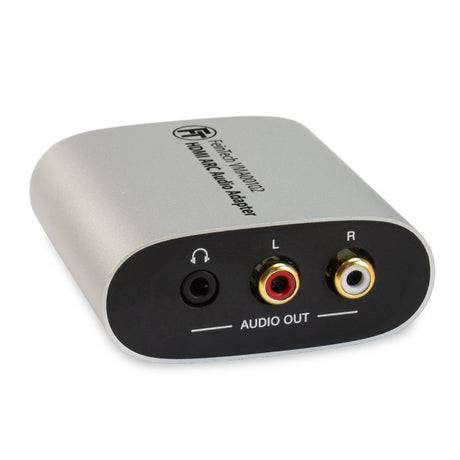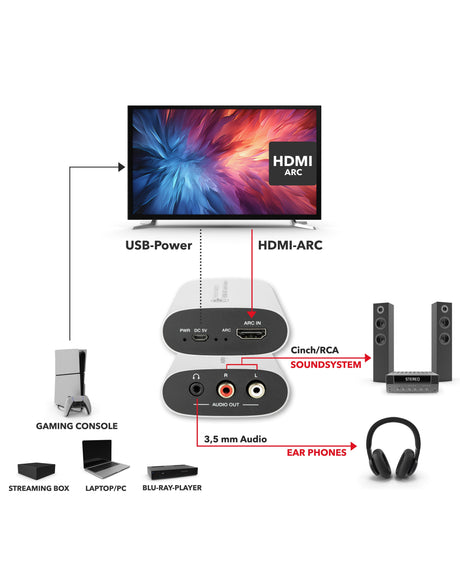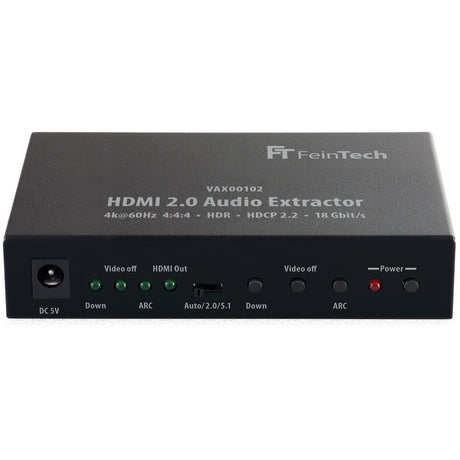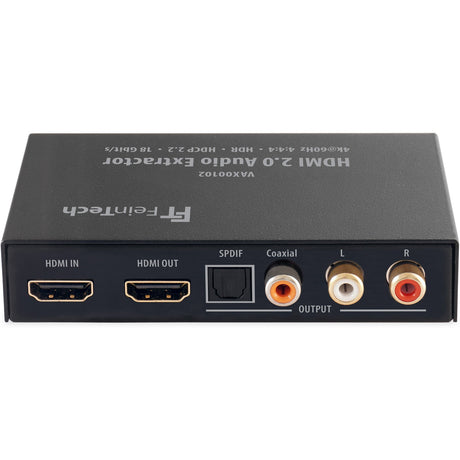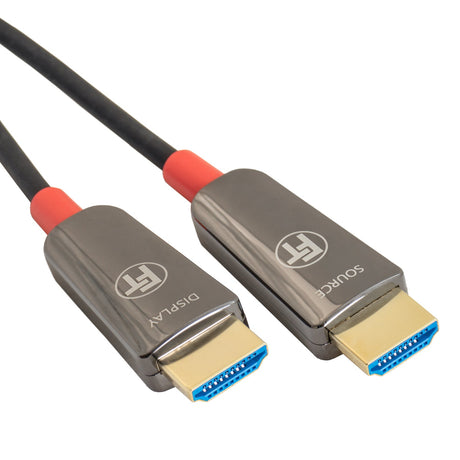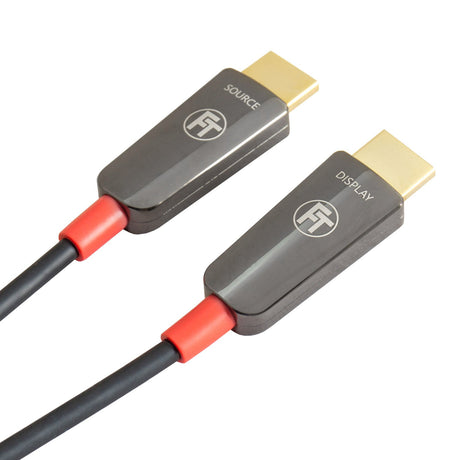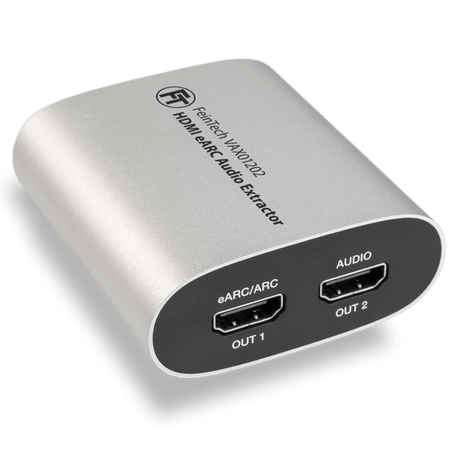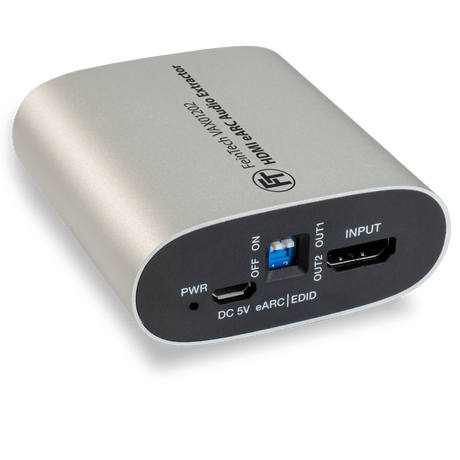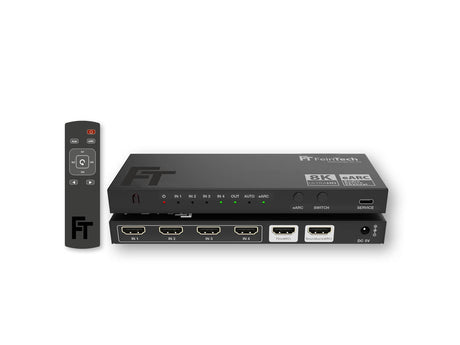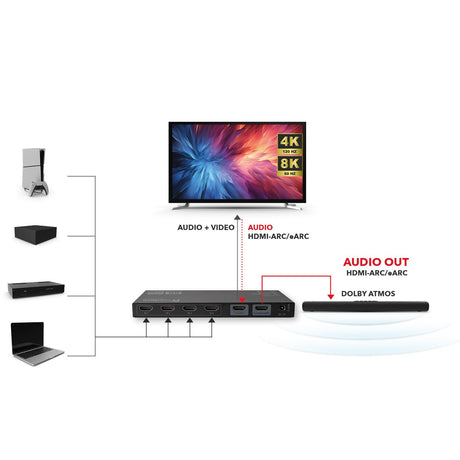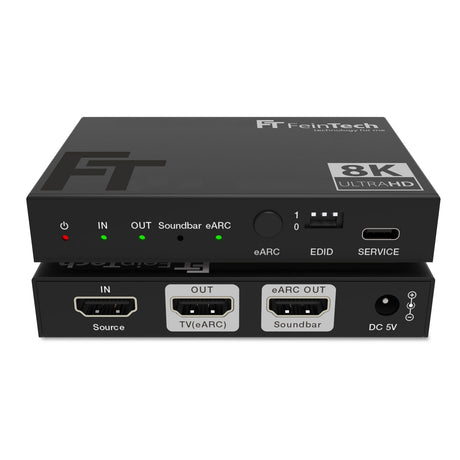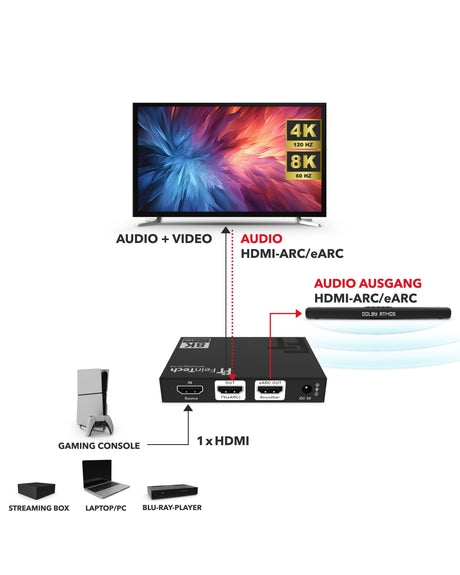HDMI is based on TMDS (Transition-Minimized Differential Signaling), at least up to and including HDMI 2.0. TMDS was developed by Silicon Image to transmit high-speed digital data. It uses an intelligent algorithm that minimizes electromagnetic interference (EMI) and enables synchronization even over distances of up to 30 meters. What's special about it is that it works even with a high signal skew in the cable, which is a real challenge, since the thin strands are usually unable to transmit good video images over long distances. HDMI 2.0 has a bandwidth of 600 MHz.
TMDS is similar to analog RGB transmission, but uses four channels: red, green, blue, and sync. These channels are implemented as twisted pairs and each requires three wires in the HDMI cable (see cover image). The audio and video signals are transmitted over these four channels, with the audio signal embedded within the color channels. This explains why you can't simply transmit audio signals separately over HDMI—for that, you need an HDMI audio extractor to filter out the audio signal.
The TMDS process achieves a maximum bandwidth of 3 x 600 MHz, enabling data transmission of up to 18 Gbps – sufficient for video resolutions up to 4K at 60 Hz. However, this is no longer sufficient for higher resolutions such as 4K at 120 Hz or even 8K. Therefore, HDMI 2.1 not only increases the data rate but also redesigns the entire transmission process. For higher resolutions, HDMI 2.1 uses the FRL (Fixed Rate Link) process, which uses four data channels without a clock signal. The advantage: The elimination of the clock signal increases the data rate by 33%. To achieve the highest resolutions and color depths, signal compression was also introduced, enabling transmission of up to 48 Gbps. You can find more details on HDMI 2.1 here.
EDID data is exchanged via the Digital Display Data Channel (DDC). You can find more information about this in our separate Article about EDID .
The 5 V voltage supplies HDMI chips in connected but switched off devices. This ensures that even inactive devices can continue to provide EDID information and receive CEC commands. This power supply can also be used to remotely power HDMI repeaters or HDMI splitters with low power consumption. According to the specifications, an HDMI device must be able to supply at least 55 mA – in practice, this is usually 200 mA or even up to 1000 mA these days. Unfortunately, this information is often not documented. The first indication of the power supply is the output of the wall adapter (if available). If the adapter can supply, for example, 12 V at 1 A (i.e. 12 W) while the main device only consumes 8 W, there is at least a theoretical reserve for the HDMI power supply.
CEC is a single-pin, bi-directional serial bus. HDMI devices communicate with the TV via CEC (see Article about CEC ).
Pin 19 has several functions: Hot-plug detection registers a device that has been added during a transfer. Since HDMI 1.4, the HDMI over Ethernet function allows an HDMI device to be connected to a network (LAN/Internet) and other HDMI devices to share this connection. This would be great if it were implemented. Unfortunately, no consumer device uses this function. The Audio Return Channel uses the same cable and is now widely used. Further information can be found in the Article about the ARC . The successor eARC uses these pins and does not necessarily require new cables or connectors.

